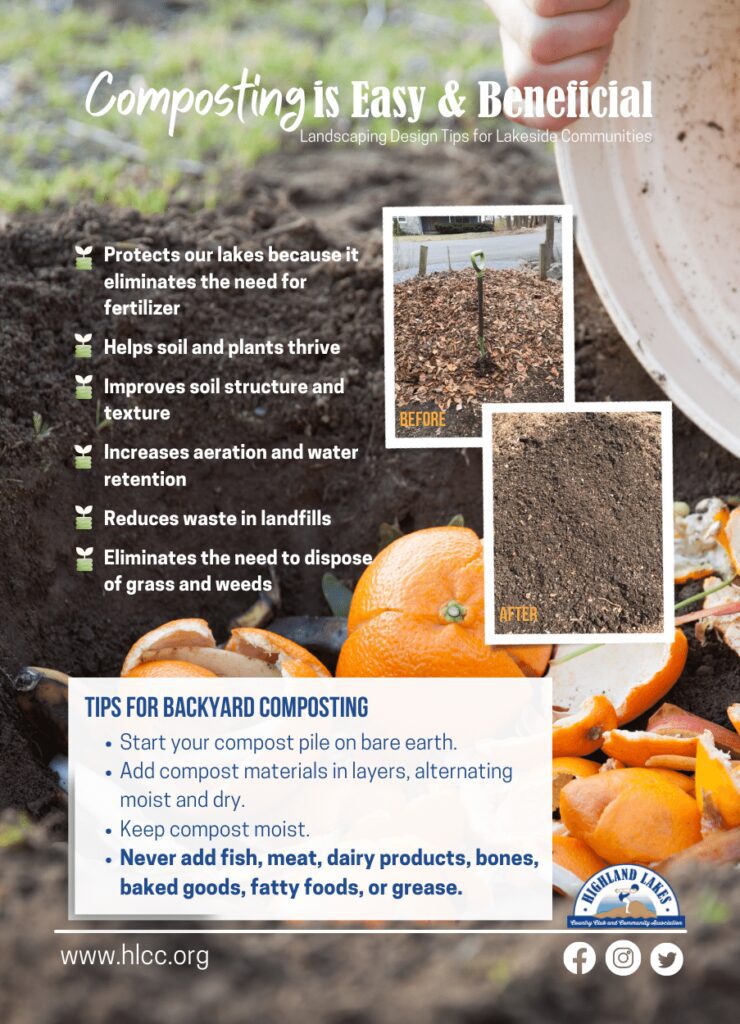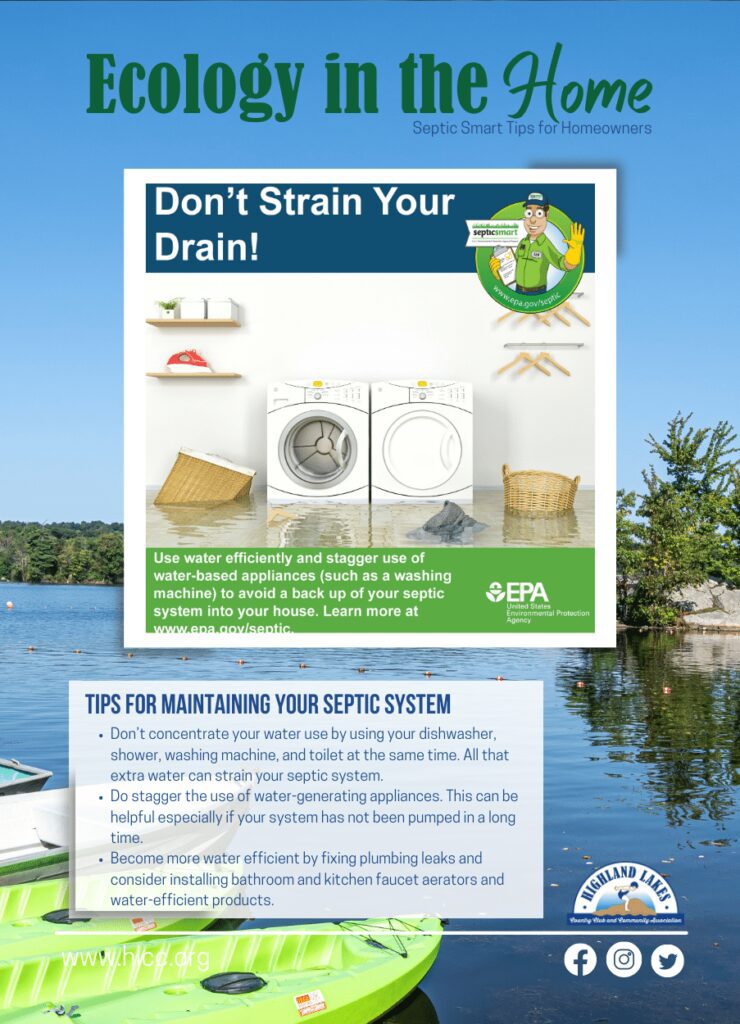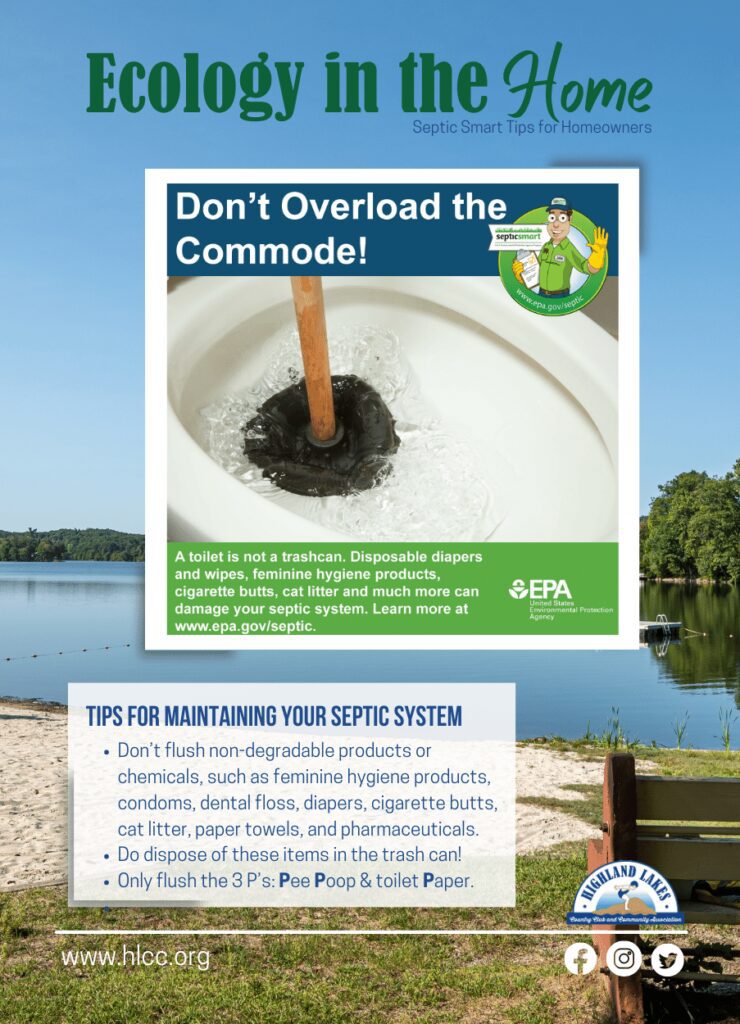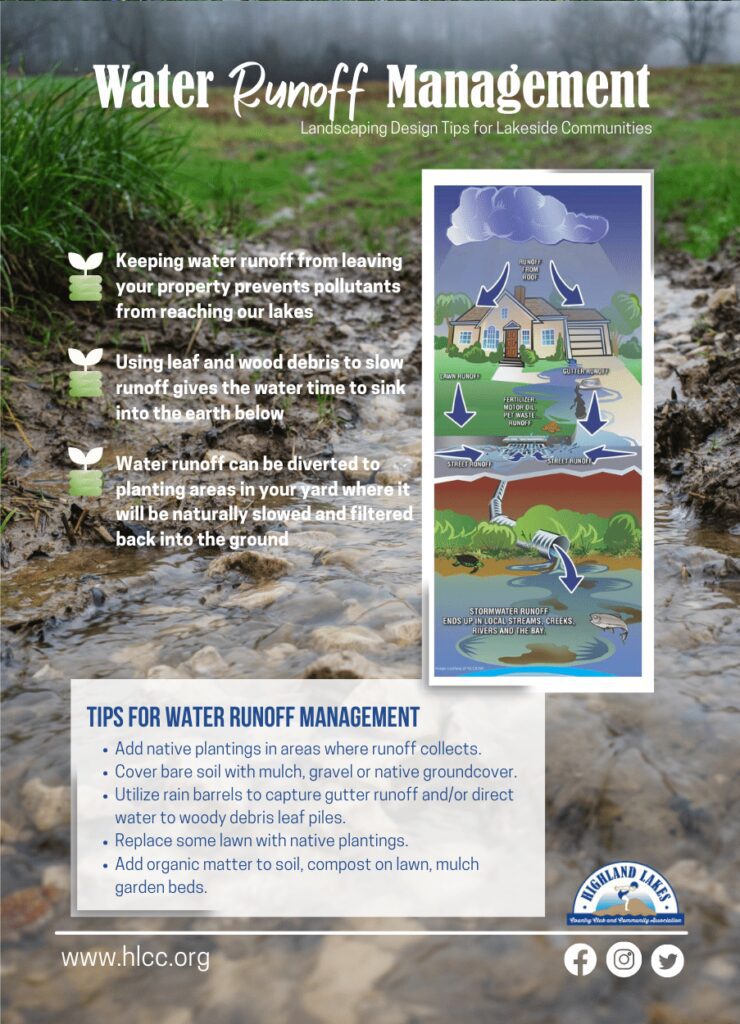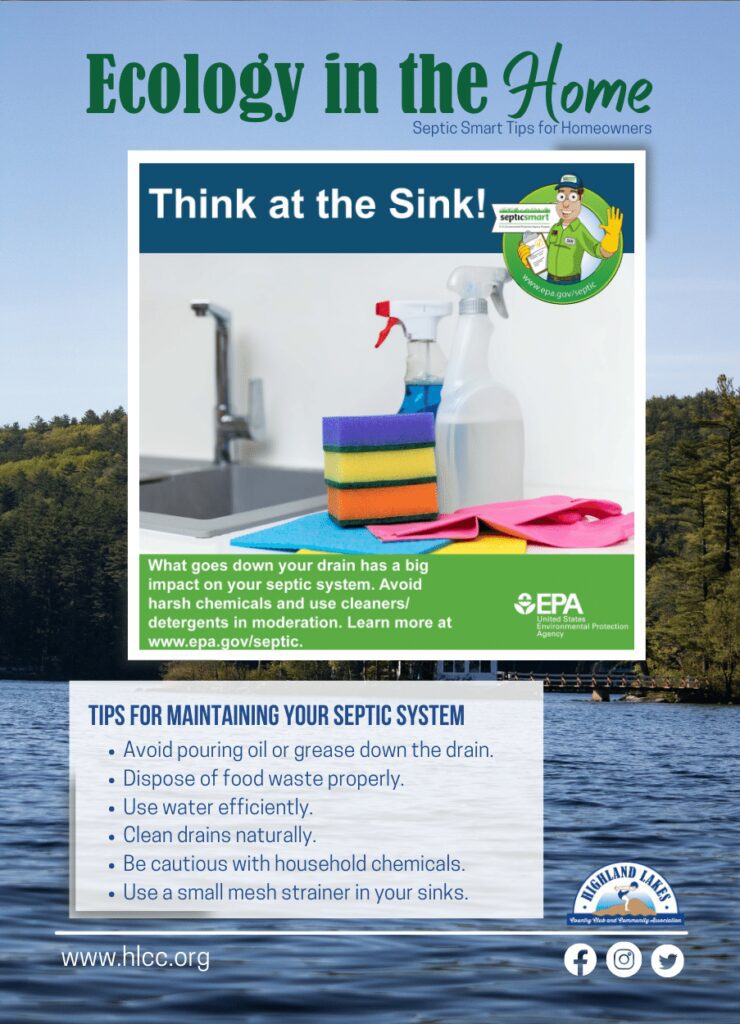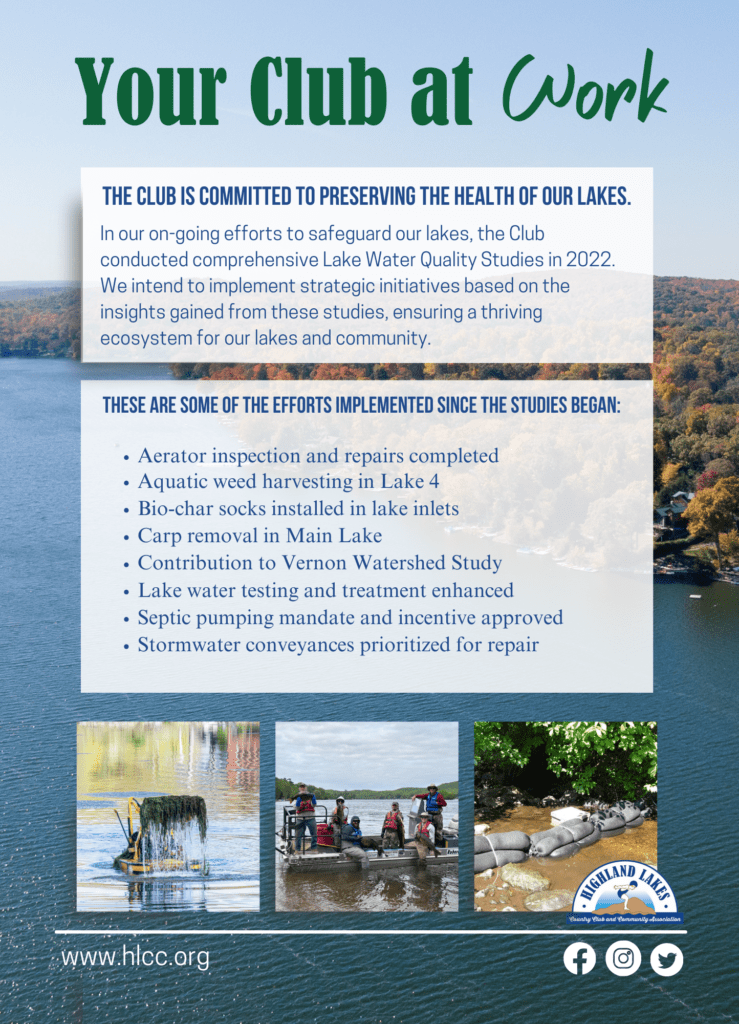Living with Lakes
Lake Health &
Water Quality
The below information focuses on the importance of lake quality, what it takes to monitor lake health, what the Club does both proactively and reactively, what our vendors do for us, and how we as a community and as individuals can help ensure we protect our lakes for the future. The goal is to consolidate the content that’s been shared over the years, update as we come across new findings, issues or remedies, and provide information about how the Club addresses lake health and concerns across all of our lakes, not just now but moving forward.
Some questions we hope to answer are:
WHAT DETERMINES THE HEALTH OF A LAKE?
Temperature, dissolved oxygen, pH, total dissolved solids, conductivity, sediment, nutrients like nitrogen and phosphorus, metals, hydrocarbons, and various chemicals are some of the many variables which determine water quality.
The physical, biological, and chemical characteristics of a lake provide the foundation needed to understand what can go wrong, and what we can do about it.
Why is lake water quality important?
Declining or low water quality impacts the value of lakes – economically, ecologically, and socially. For example, when pollution enters a lake, it can reduce the water quality enough such that it is unsafe to swim and harms the organisms that live in the water, reducing the ecological and recreational value of the lake. Poor lake quality also affects the value of our homes whether you live lakefront or not. The health of our lakes affects every homeowner equally. Imagine saying “I live in a lake community but we can’t enjoy them because they’re unsafe to swim in." We all MUST do our part.
Who monitors lake quality & lake health?
The Club spends as much as $250,000 per year on lake management which involves both monitoring and treatment protocols. The two main vendors that tell us how our lakes are doing are Princeton Hydro and Lake Management Sciences. Princeton Hydro routinely collects and analyzes water samples to determine the physical, chemical, and biological characteristics present in each lake. This allows them to assess water quality and recommend the best options to predict, prevent or correct problems such as algae blooms and invasive plant growth. Lake Management Sciences is the Club’s lake treatment contractor. They also conduct water quality monitoring aimed at the control and natural balance of both aquatic plants and algae. LMS collects algae samples and performs an inventory of submerged vegetation. LMS also implements treatments with herbicides and algaecides (recently chelated copper) when it is determined that a bloom is likely.
Our lakes are inspected and sampled twice a month from April to September. Lakes 2 and 4 are sampled three times a month during July and August.
Both Princeton Hydro and Lake Management Sciences submit a service report after each visit. The reports have the Temperature, Dissolved Oxygen, pH, Secchi Reading, and Total Phytoplankton taken from each lake. These reports often include treatment recommendations. Throughout the warmer months, the Club, Princeton Hydro, and LMS discuss the water quality of our lakes, with close observation on the algal concentrations.
To get a better understanding of the problematic areas in our lakes, in 2021-2022 with the approval of the Board, the Club hired several vendors to perform interrelated studies that will help us address the complex array of problems across all of our lakes, not just now but moving forward. The studies are a bathymetric survey, hydrologic modeling, nutrient load modeling, stormwater infrastructure mapping, and a carp population study. More details about that below.
Edited August 2023 to update lake management vendor. - CC
What does the Club do to maintain lake quality?
- Princeton Hydro was contracted to thoroughly inspect and repair all aeration systems where necessary. Aeration systems consist of an on-shore air compressor connected to in-lake diffusers and are used to increase the concentration of dissolved oxygen in the water. Those are the bubbles you see around the lakes. Expansion and upgrade of some aeration systems may be called for if results of recent technological studies indicate the need.
- Lake Management Sciences treats the lakes for algae and weeds as needed. Princeton Hydro recently applied a promising new product called Eutrosorb WC in Lake 4. Eutrosorb WC is a compound designed to strip nutrients (which algae feed on) from the water column. We are also investigating use of another product call GreenClean, a hydrogen peroxide-based product which has been shown to be effective in killing blue-green algae – which has the potential cause harmful algae blooms or HABs
- We are talking directly with town officials about fixing known road drainage issues on Canistear Road that we believe are contributing to our lake issues.
- Bathymetric surveys measure the depth of a water body, and map the underwater contours of each lake. They provide accurate surface-to-bottom measurements, total lake volume, flushing and retention rates and the volume and thickness of sediment/organic material, across all of our lakes.
- Hydrologic modeling maps the topography of the surrounding lands which contribute runoff, sediment and nutrients to the lakes through streams, surface waters and stormwater flows. The hydrologic study will identify locations where the volume and velocity of streams and other inflow may need to be addressed, where filtration needs to be considered, and where better containment is needed.
- Nutrient load modeling identifies various sources that fuel algae and weed growth, which sources (septics, fertilizers, runoff, etc.) contribute the most nutrients and areas where accumulations of sediment are causing problems.
- Crew Engineering is a professional engineering firm which was hired to complete inventory, inspection, assessment and mapping of all existing stormwater conveyances (catch basins, culvert pipes, swales and inlets). This study recorded the locations and conditions of nearly 600 stormwater conveyances on our private roads, as well as those owned by the town, that impact our community. Those conveyances needing repair or replacement have been prioritized and will be scheduled for repairs beginning in 2023.
- We contracted Carp Solutions for the study of our carp population. Carp are considered a threat to healthy lakes because their activity stirs up lake sediment, which releases nutrients and can be a major contributor to algae blooms and related issues. This study is tentatively scheduled to begin in the fall of 2022.
Collectively these studies will help us to create a watershed management plan that will help us control runoff, identify the potential locations for aeration, decide how to address excessive lake bottom sediment, what additional steps might improve control of alga and invasive plant species, and plan for future remediation in the months and years to come.
When are our lakes most vulnerable?
The winter months provide the cold temperatures and an ecological respite from many of the conditions which contribute to impaired lake health. Beginning in the spring, melting snow and the rainy season contribute to runoff entering the lakes, adding excess nutrients on which plants and algae will feed. And finally, the summer heat and abundant sunshine combine with the excess nutrients to accelerate the growth of plants and algae.
The most common concerns you hear about are:
- Excessive Weed Growth – all lakes – Eurasian Watermilfoil, Curlyleaf Pondweed, mats of filamentous algae
- Cyanobacteria/Algae Bloom
- Excessive levels of bacteria (e-Coli at beaches and inlets)
Where are the pain points with lake health?
In an ideal world, our lakes would be completely free of runoff from the roads, lawn fertilizers, and septic system leakage because those specific factors contribute to lake pollution and increased nutrients feeding the unwanted weeds and algae.
- Water runoff contributes to pollution in our lakes when it carries oil, gas, waste, and more from the roads.
- Water runoff from yards carries plant food [i.e lawn fertilizers, decomposing leaves, natural plant food] and feeds cyanobacteria. Excessive growth of cyanobacteria is what causes algal blooms.
- Water runoff in general carries excessive sediments that eventually make their way to the bottom of our lakes.
- Septic systems, whether they are functioning properly or not, pose a significant threat by allowing nutrients into the water through the ground and, if malfunctioning, from the surface. Septic effluent is high in phosphorus, which is the nutrient having the greatest impact on lake health.
What have the lake management vendors recommended? And which recommendations have we implemented?
The vendors we contract have suggested that we do the following:
- Switch from Copper Sulfate to Chelated Copper. This controls the filamentous and planktonic algae. Done.
- Switch from Alum to Eutrosorb WC which is a new compound to strip nutrients that contribute to cyanobacteria. Done.
- Aerator inspections and repair. Done.
- Stormwater mapping for priority & future repair. Done.
- Determine our most troubling runoff areas and address them. In progress.
- Apply Hydrogen Peroxide-based algaecide treatment to Lake 4 to combat cyanobacteria. In progress.
- Address septic system concerns on a community-wide level. In progress – See “How can members help?”
- Add shoreline buffers to help protect the lakes by keeping erosion at bay and by filtering contaminated water and/or excessive nutrients that would otherwise enter that body of water – See “How can members help?”
- Install rain gardens to help collect rainwater from roofs, driveways & streets. See “How can members help?”
- Sediment removal and/or dredging. Under review.
- Defining and stabilizing boat & kayak access points. Under review.
- Hydro-raking – (mechanical raking) is a technique for selective removal of nuisance and rooted vegetation. The hydro-rake is also used to clear accumulations of unconsolidated bottom muck and debris (i.e. decaying leaves, peat, etc.). Under review – volunteers have begun limited, small-scale manual removal at beaches.
How can members help?
There are no quick/easy solutions. Reversing the issues in our lakes requires a long-term ongoing commitment by the community as a whole. In addition to the actions that the Club takes for in-lake management, the vendors have suggested that members contribute to our lake health & maintenance by implementing the following:
- Take note of how water runs off your property and into the direction of the lakes.
- Install rain gardens to help with water runoff.
- Add shoreline buffers to help protect the lakes by keeping erosion at bay and by filtering contaminated water and/or excessive nutrients that would otherwise enter that body of water.
- Do not blow or dump fallen leaves or grass clippings into the lake.
- Do not use fertilizers for lawn care.
- Educate yourself on proper septic maintenance and care. This includes:
- Routine septic system inspections and maintenance.
- Pump your septic system at least every 3 years .
- Correct failing septic systems.
- Replace old metal septic tanks or hand built cesspools. These can collapse once the liquid and sludge has been removed.
- Do not dispose of paint, solvents or left-over household chemicals and cleaning products in septic systems. These products can cause serious upsets to the biological treatment processes that occur in the septic tank itself and in the soils of the disposal field.
- Refrain from using products that are associated with enzymes, bacteria inoculants, or other products advertised as septic tank supplements.
- Refrain from using garbage disposal units/grinders. Excessive or improper use of these devices can increase organic loading and further stresses the system’s operation by adding to both the sludge and grease layers.
- Water conservation measures are intended to reduce hydrologic loading to the leach field. Use low flush toilets, flow reduction fixtures and other similar devices designed to reduce water usage. It can also encompass lifestyle habits such as spreading out laundry wash loads over a number of days, shorter showers, and other similar cooperative techniques.
- Natural Landscaping
- Install native vegetation plantings which have lower fertilizer and irrigation requirements.
- Minimize the disturbance and utilize the natural landscaping that already exists on your property.
- Fertilizer Management
- In 2010 NJ passed legislation that bans phosphorus from over-the-counter fertilizers (the types of products sold at most big box retail stores). The legislation also limits the amount of nitrogen (0.7 lbs/1,000 ft2) in the fertilizer and specifies that at least 20% of the nitrogen must be in a time-release formula. The legislation also restricts the timing of fertilizer application (no fertilizer applications between November 15 and March 1).
- Determine proper fertilizer requirements for your lawn.
- Conduct soil pH and nutrient testing before applying any lawn care product to their lawn.
- Learn about the benefits of liming, aeration, thatch control, and other non-chemical lawn care measures.
- Pet Waste Management
- Defining and stabilizing boat access points
What do the WATCH and ADVISORY alerts mean for how we use the lakes?
Our vendors test our lakes regularly for cyanobacteria (blue-green algae) levels. Cyanobacteria has the potential to create harmful algae blooms or HABs which may contain cyanotoxins. Based on the levels of cyanobacteria present in a water body, the NJDEP has developed a public awareness program and recreational use recommendations. Lake owners or managers are required to post public notices whenever the cyanobacteria levels are above a specific threshold. The index has multiple alert levels, each with recommendations concerning which activities should be avoided based on water monitoring results. You can read about those alert tiers HERE.
The Club goes a step further by testing the lakes not only for cyanobacteria, but also for cyanotoxins, whenever cyanobacteria levels exceed the lowest NJDEP HAB threshold of 20,000 cells/ml.
Often our lakes may have elevated levels of cyanobacteria but test negative for cyanotoxins. But because the cyanobacteria levels are above the NJDEP threshold, we will still post notices and recommendations consistent with NJDEP guidance.
Resources



